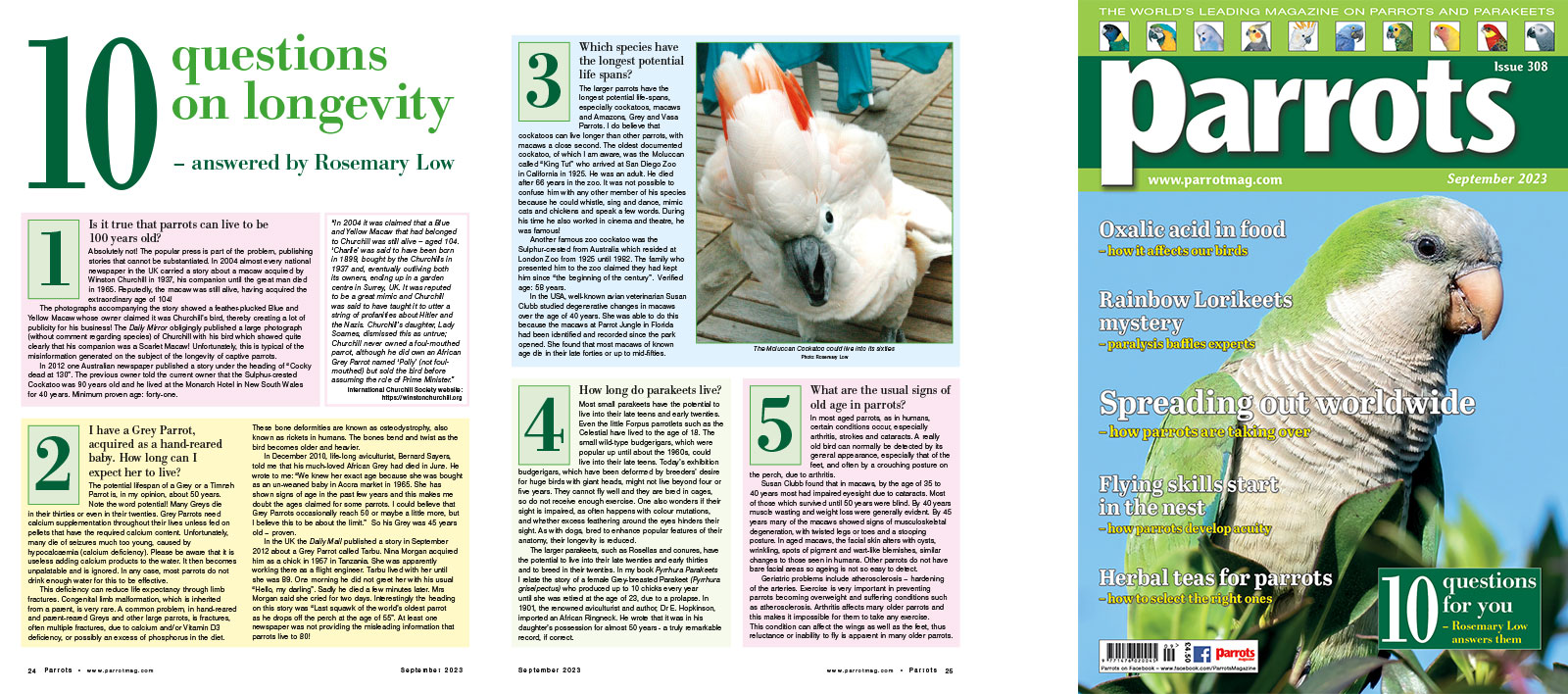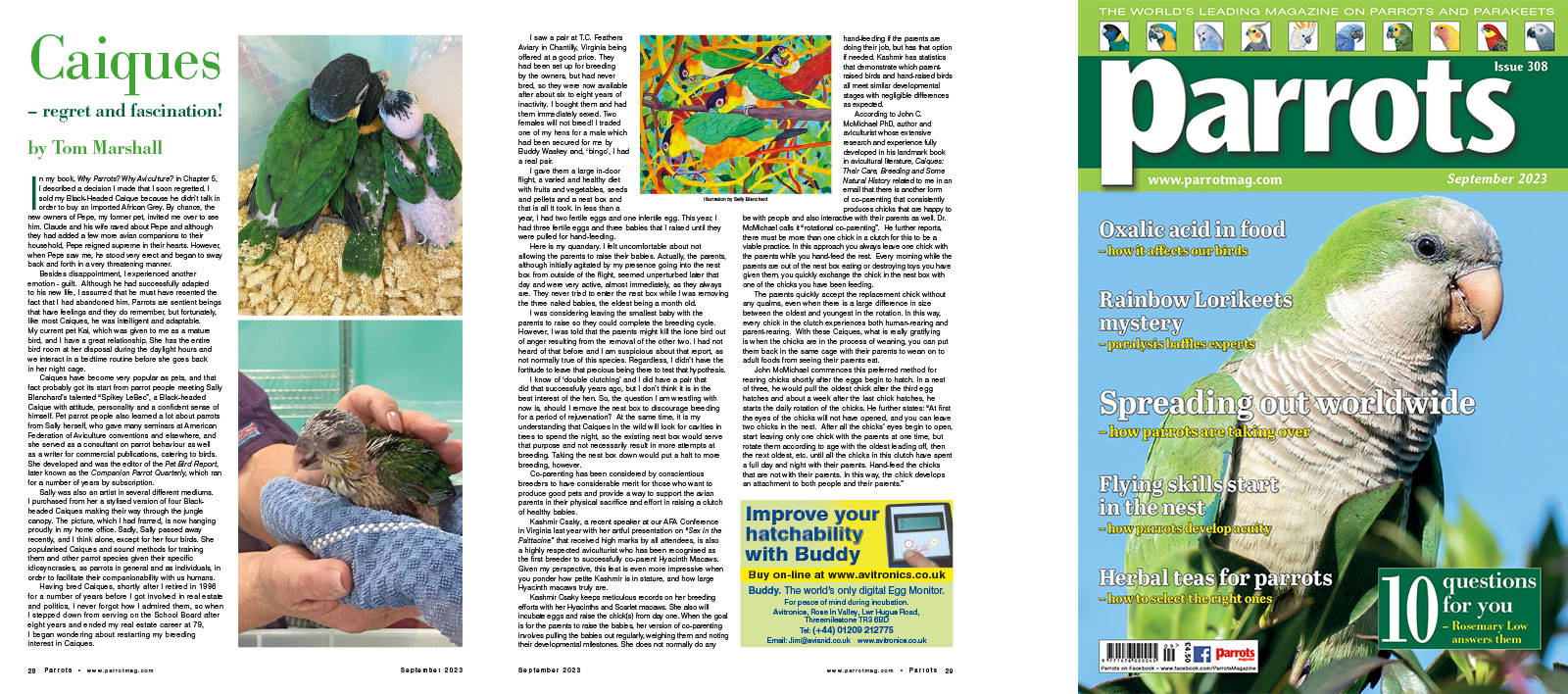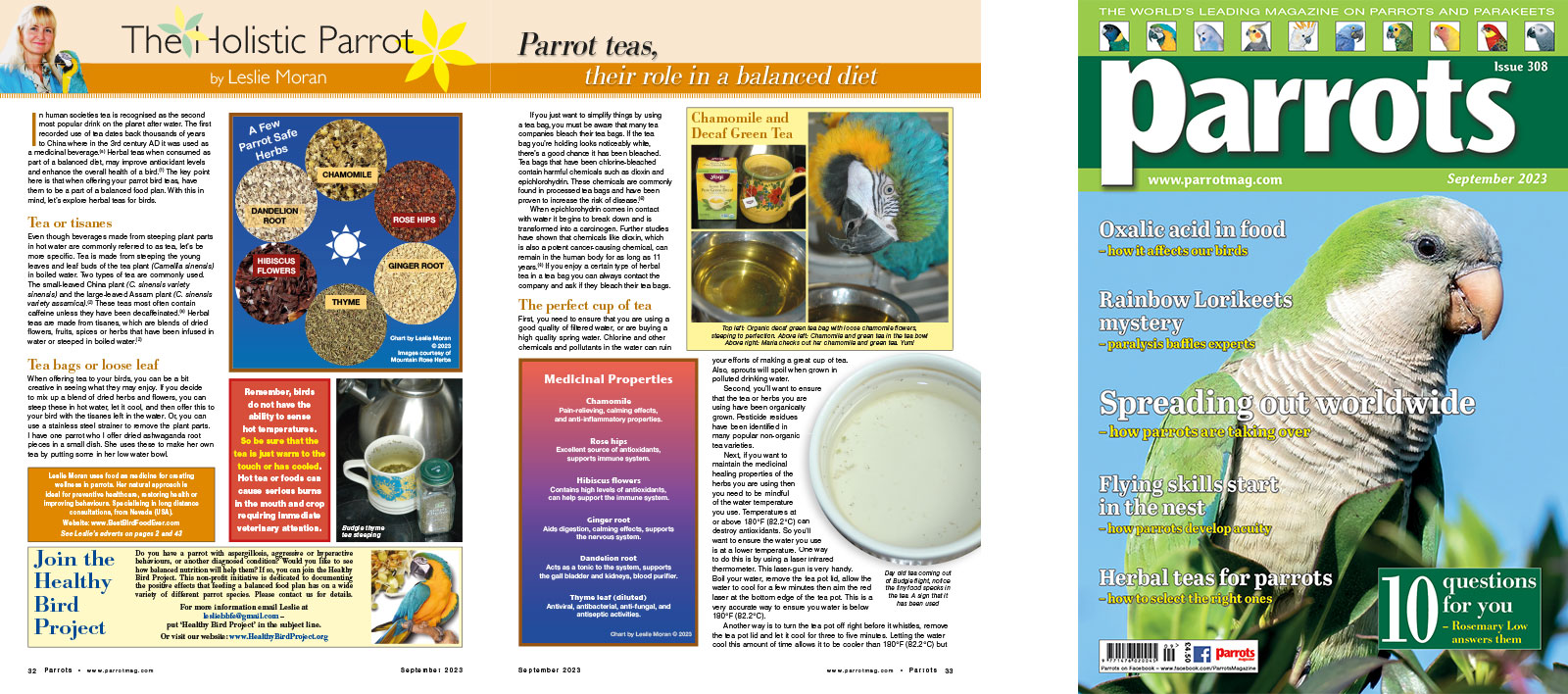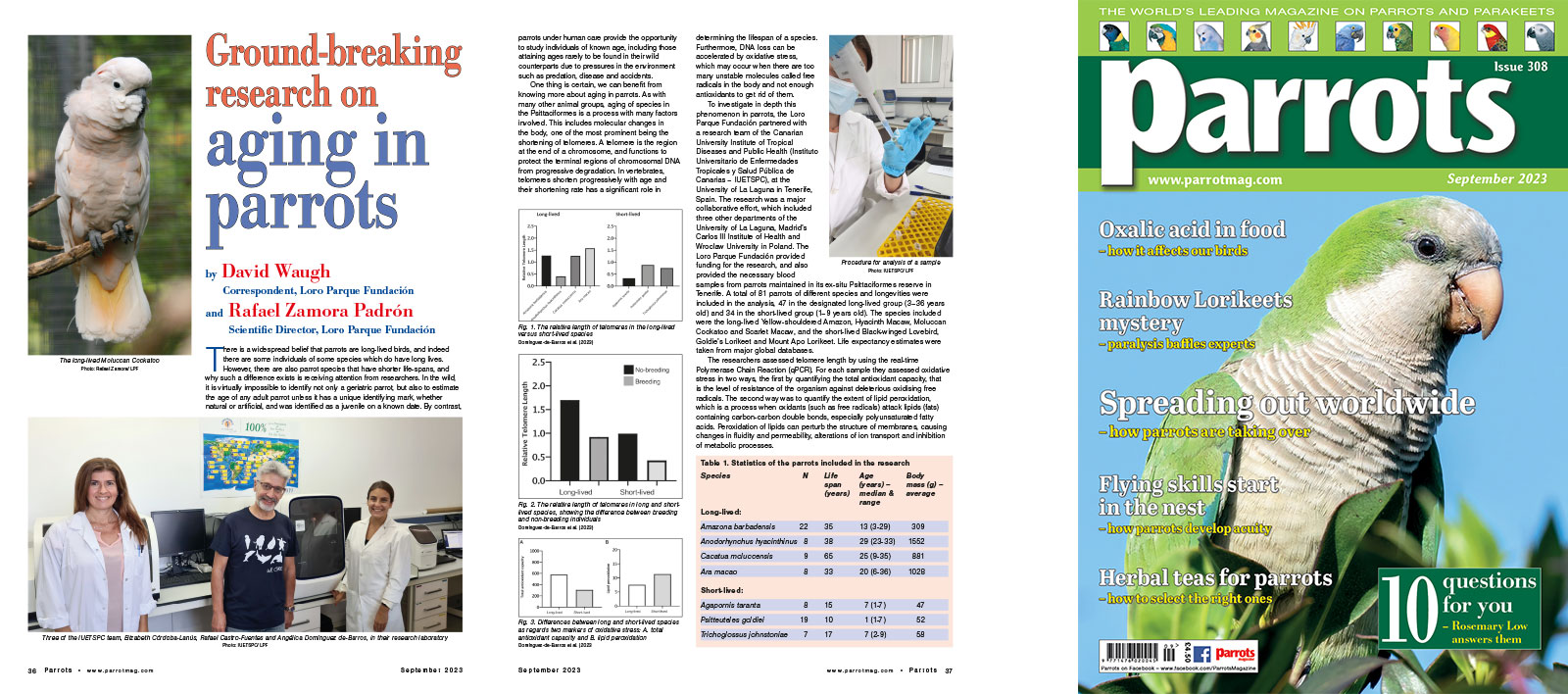
– answered by Rosemary Low
1. Is it true that parrots can live to be 100 years old?
Absolutely not! The popular press is part of the problem, publishing stories that cannot be substantiated. In 2004 almost every national newspaper in the UK carried a story about a macaw acquired by Winston Churchill in 1937, his companion until the great man died in 1965. Reputedly, the macaw was still alive, having acquired the extraordinary age of 104!
The photographs accompanying the story showed a feather-plucked Blue and Yellow Macaw whose owner claimed it was Churchill’s bird, thereby creating a lot of publicity for his business! The Daily Mirror obligingly published a large photograph (without comment regarding species) of Churchill with his bird which showed quite clearly that his companion was a Scarlet Macaw! Unfortunately, this is typical of the misinformation generated on the subject of the longevity of captive parrots.
In 2012 one Australian newspaper published a story under the heading of “Cocky dead at 130”. The previous owner told the current owner that the Sulphur-crested Cockatoo was 90 years old and he lived at the Monarch Hotel in New South Wales for 40 years. Minimum proven age: forty-one.
Buy Now!

By Tom Marshall
In my book, Why Parrots? Why Aviculture? in Chapter 5, I described a decision I made that I soon regretted. I sold my Black-Headed Caique because he didn’t talk in order to buy an imported African Grey. By chance, the new owners of Pepe, my former pet, invited me over to see him. Claude and his wife raved about Pepe and although they had added a few more avian companions to their household, Pepe reigned supreme in their hearts. However, when Pepe saw me, he stood very erect and began to sway back and forth in a very threatening manner.
Besides disappointment, I experienced another emotion - guilt. Although he had successfully adapted to his new life, I assumed that he must have resented the fact that I had abandoned him. Parrots are sentient beings that have feelings and they do remember, but fortunately, like most Caiques, he was intelligent and adaptable. My current pet Kai, which was given to me as a mature bird, and I have a great relationship. She has the entire bird room at her disposal during the daylight hours and we interact in a bedtime routine before she goes back in her night cage.
Caiques have become very popular as pets, and that fact probably got its start from parrot people meeting Sally Blanchard’s talented “Spikey LeBec”, a Black-headed Caique with attitude, personality and a confident sense of himself. Pet parrot people also learned a lot about parrots from Sally herself, who gave many seminars at American Federation of Aviculture conventions and elsewhere, and she served as a consultant on parrot behaviour as well as a writer for commercial publications, catering to birds. She developed and was the editor of the Pet Bird Report, later known as the Companion Parrot Quarterly, which ran for a number of years by subscription.
Buy Now!

The Holistic Parrot by Leslie Moran
In human societies tea is recognised as the second most popular drink on the planet after water. The first recorded use of tea dates back thousands of years to China where in the 3rd century AD it was used as a medicinal beverage. Herbal teas when consumed as part of a balanced diet, may improve antioxidant levels and enhance the overall health of a bird. The key point here is that when offering your parrot bird teas, have them to be a part of a balanced food plan. With this in mind, let’s explore herbal teas for birds.
Even though beverages made from steeping plant parts in hot water are commonly referred to as tea, let’s be more specific. Tea is made from steeping the young leaves and leaf buds of the tea plant (Camellia sinensis) in boiled water. Two types of tea are commonly used. The small-leaved China plant (C. sinensis variety sinensis) and the large-leaved Assam plant (C. sinensis variety assamica). These teas most often contain caffeine unless they have been decaffeinated. Herbal teas are made from tisanes, which are blends of dried flowers, fruits, spices or herbs that have been infused in water or steeped in boiled water.
When offering tea to your birds, you can be a bit creative in seeing what they may enjoy. If you decide to mix up a blend of dried herbs and flowers, you can steep these in hot water, let it cool, and then offer this to your bird with the tisanes left in the water. Or, you can use a stainless steel strainer to remove the plant parts. I have one parrot who I offer dried ashwaganda root pieces in a small dish. She uses these to make her own tea by putting some in her low water bowl.
Buy Now!

By David Waugh, Correspondent, Loro Parque Fundación, and Rafael Zamora Padrón, Scientific Director, Loro Parque Fundación
There is a widespread belief that parrots are long-lived birds, and indeed there are some individuals of some species which do have long lives. However, there are also parrot species that have shorter life-spans, and why such a difference exists is receiving attention from researchers. In the wild, it is virtually impossible to identify not only a geriatric parrot, but also to estimate the age of any adult parrot unless it has a unique identifying mark, whether natural or artificial, and was identified as a juvenile on a known date. By contrast, parrots under human care provide the opportunity to study individuals of known age, including those attaining ages rarely to be found in their wild counterparts due to pressures in the environment such as predation, disease and accidents.
One thing is certain, we can benefit from knowing more about aging in parrots. As with many other animal groups, aging of species in the Psittaciformes is a process with many factors involved. This includes molecular changes in the body, one of the most prominent being the shortening of telomeres. A telomere is the region at the end of a chromosome, and functions to protect the terminal regions of chromosomal DNA from progressive degradation. In vertebrates, telomeres shorten progressively with age and their shortening rate has a significant role in determining the lifespan of a species. Furthermore, DNA loss can be accelerated by oxidative stress, which may occur when there are too many unstable molecules called free radicals in the body and not enough antioxidants to get rid of them.
Buy Now!




